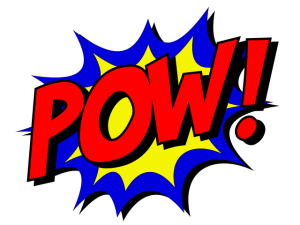 Although not a type of literature typically found in health sciences libraries, comics are receiving attention as a promising educational resource for the health professions. Green and Myers, using the term “graphic pathographies” to refer to comics depicting illness and healthcare experiences, have argued that these narratives may lead to a “visceral understanding” that conventional texts cannot replicate. Ian Williams, credited with coining the term “graphic medicine,” notes that comics contain images, symbols, and manipulated text that can depict not just outwardly obvious illnesses, but also concealed medical conditions and mental or cognitive states resulting from both. This complexity allows the author to portray illness in a way that “…transmits the raw veracity of lived experience.”
Although not a type of literature typically found in health sciences libraries, comics are receiving attention as a promising educational resource for the health professions. Green and Myers, using the term “graphic pathographies” to refer to comics depicting illness and healthcare experiences, have argued that these narratives may lead to a “visceral understanding” that conventional texts cannot replicate. Ian Williams, credited with coining the term “graphic medicine,” notes that comics contain images, symbols, and manipulated text that can depict not just outwardly obvious illnesses, but also concealed medical conditions and mental or cognitive states resulting from both. This complexity allows the author to portray illness in a way that “…transmits the raw veracity of lived experience.”
A traditional use of graphic texts is to include them as supplemental material in a standard or required class, to provide students with a patient perspective on a disease or condition. However, medical educators are also designing graphic medicine courses. These classes focus on comics themselves as a medium, requiring students to critically read and discuss medically themed comics, and to create their own comics depicting formative experiences in their education. In an early evaluation of one such course, Green found that medical students felt this use of comics enhanced clinical skills such as communicating with colleagues and feeling empathy.
Interested in learning more? Here are some well-known texts:
- Mom’s Cancer by Brian Fies (2004)
- Cancer Vixen: A True Story by Marisa Acocella Marchetto (2006)
- Stitches by David Small (2009)
- Marbles: Mania, Depression, Michelangelo and Me by Ellen Forney (2012)
- My Degeneration: A Journey through Parkinson’s by Peter Dunlop-Shohl (2016)
~Mary Lou Klem